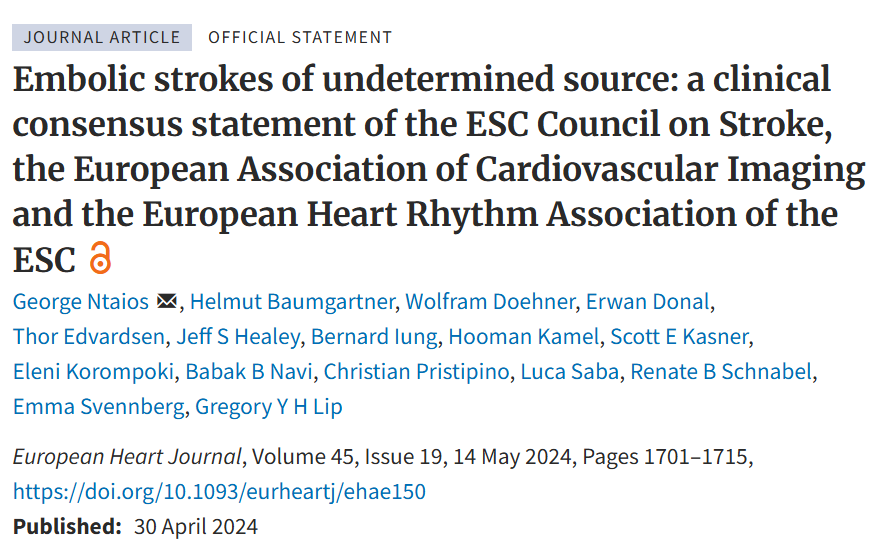
Zain Khalpey: Did You Know 1 in 6 Ischemic Strokes Has no Clearly Identified Cause?
Zain Khalpey, Chief Medical AI Officer, Chair of Applied Clinical AI, Director, Khalpey AI Lab at ATARI AI, shared a post on LinkedIn:
“Did you know 1 in 6 ischemic strokes has no clearly identified cause?
These are known as Embolic Strokes of Undetermined Source (ESUS) and they represent one of the greatest challenges in stroke prevention and care.
A new European Heart Journal consensus statement offers a comprehensive, multidisciplinary framework to better understand and manage ESUS, integrating cardiology, neurology, and vascular insights.
This pivotal paper reframes how we assess risk not by guessing a single cause, but by evaluating the total thromboembolic burden across all potential sources:
- Atrial and ventricular disease
- Patent foramen ovale (PFO)
- Atherosclerosis
- Valvular disorders
- Cancer-associated coagulopathies
Title: Embolic strokes of undetermined source: a clinical consensus statement of the ESC Council on Stroke, the European Association of Cardiovascular Imaging and the European Heart Rhythm Association of the ESC
Authors: George Ntaios, Helmut Baumgartner, Wolfram Doehner, Erwan Donal, Thor Edvardsen, Jeff S Healey, Bernard Iung, Hooman Kamel, Scott E Kasner, Eleni Korompoki, Babak B Navi, Christian Pristipino, Luca Saba, Renate B Schnabel, Emma Svennberg, Gregory Y H Lip

Read the full open-access consensus here:
Follow Zain Khalpey for more on Ai & Healthcare.”
Stay updated with Hemostasis Today.
-
Dec 19, 2025, 13:30PPTA Europe’s Holiday Message: Wishing Health, Rest, and Renewal for 2026
-
Dec 19, 2025, 13:22If You Were Reading a “Bible for Blood Donation Volunteers,” What’s the ONE Thing That Must Be in It?
-
Dec 19, 2025, 12:52Julia Owens: Stroke Remains One of the World’s Leading Causes of Death and Disability
-
Dec 19, 2025, 12:03Pradeep Natarajan: Our New Genetic Study of Aortic Stenosis in ~3M
-
Dec 19, 2025, 11:47ESO Blog: Anna Gardin on Stroke Risk in the Era of Climate Extremes
-
Dec 19, 2025, 10:51Sarah Elkourashy Presents Insights on Caplacizumab for TTP at ASH25
-
Dec 19, 2025, 10:08Camilla Lombardi Shares an EHC Nutrition Guide for People with Bleeding Disorders
-
Dec 19, 2025, 09:56Danny Hsu Shares The ”I-WISh” Study by Nichola Cooper on ITP
-
Dec 19, 2025, 09:39Paul Bolaji: A Landmark Achievement -The Historic 1st Nigerian Stroke Leaders’ Summit 2025
